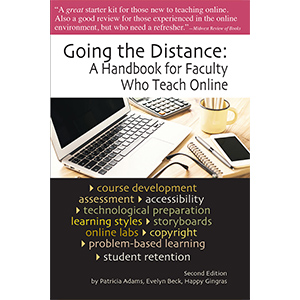Tips For Giving Feedback To Students More Efficiently and Effectively

 By Bruce A. Johnson, Ph.D., MBA
By Bruce A. Johnson, Ph.D., MBA
An adjunct instructor has many responsibilities to consider each week and this emphasizes the need to have effective facilitation strategies. One responsibility that can be extremely demanding is feedback for written assignments, especially for assignments that are lengthy and involve complex topics. The challenge is to provide meaningful feedback for students in a timely manner. Students expect that their instructor will do more than provide a cursory overview or response to their assignment, especially when they have spent a great deal of time developing their paper. Evaluating students’ assignments requires the instructor to consider many aspects, from the content of what was written, to the mechanics and overall presentation of the response. Instructors need to be ready to effectively and efficiently meet the feedback challenge. Start with a rubric, which can provide uniform and meaningful feedback for all students.
The initial development of a rubric may take time; however, this is an opportunity to clearly define the assignment criteria and overall expectations. The assignment instructions often indicate what a student is to do for their assignment. A rubric will expand upon those instructions and offer an explanation regarding how it should be accomplished. The rubric can outline elements such as topic development, word count, associated learning objectives, formatting guidelines, requirements regarding mechanics that include spelling, grammar, sentence structuring, and any other essential requirements. The rubric can also include specifics that guide students through the process of cognitive development with action words that may include analyze, synthesize, evaluate, describe, develop, consider, contrast, and identify. With a rubric that provides these detailed elements, students will have a clear understanding of how points were earned and this transforms an instructor’s potentially subjective feedback into objective feedback because it is focused on these established criteria.
The use of a rubric also provides a means of effective communication with students. The wording within a rubric serves as a foundation that an instructor can build upon through detailed comments added for each section. For example, if a student has not earned the full points possible for the mechanics section of the rubric, the instructor can provide detailed comments that explain why those points were missed. In addition, the comments sections can further discuss important aspects such as course topics, the student’s developmental progress, and resources that can assist them with their essay development or writing skills. An overall wrap-up note can be included at the end of the rubric as a means of summarizing the feedback provided and reinforcing key components. If a rubric is provided without comments and serves only as a checklist of points its effectiveness is greatly diminished. Through the instructor’s written notations it is possible to engage the student in a conversation that acknowledges their effort and progress, while encouraging them to consider their overall strengths and areas of needed improvement.
From a student’s perspective, they are likely to respond in a positive manner to the feedback provided if they open their returned assignment and see something that states more than “good job” or “your response met all of the requirements,” especially if a rubric is included that provides a breakdown of how points were earned and a detailed explanation. Another helpful strategy is to share a copy of the rubric at the beginning of the class week. If students are provided with a copy of the rubric prior to the assignment due date that can further emphasize the instructor’s expectations and also provide students with a means of self-checking their work.
Providing meaningful feedback is an important concern for instructors and an aspect of classroom facilitation that requires a significant investment of time. A rubric can be utilized as a tool for establishing a uniform feedback structure. As an instructor is reviewing the student’s assignment they can follow through each section of the rubric and include their thoughts and comments. This helps to engage the instructor in the student’s work and demonstrates to the student that their response has been thoroughly evaluated. When the assignment has been evaluated and returned there is an opportunity for the student to receive guidance from their instructor, which will strengthen their academic performance. Rubrics can enhance the process of feedback by establishing a format for providing a meaningful progress report.
About the Mentor: Dr. Bruce Johnson has had a life-long love of learning and throughout his entire career he has been involved in many forms of adult education; including teaching, training, human resource development, coaching, and mentoring. Dr. J has completed a master’s in Business Administration and a PhD in the field of adult education, with an emphasis in adult learning within an online classroom environment. Presently Dr. J works as an online adjunct instructor, faculty developmental workshop facilitator, and faculty mentor.








